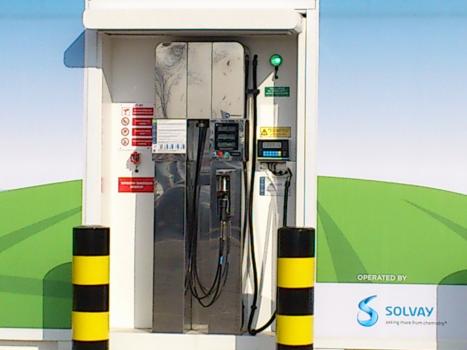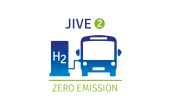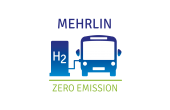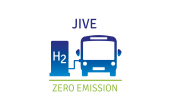
The refueller delivers hydrogen to the vehicle’s tank in a controlled manner and to the correct pressure. Hydrogen is dispensed to the vehicle through a flexible hose and nozzle connected to the vehicle’s tank, in a similar fashion to refilling with petrol or diesel. However, in addition to the dispenser, the refuelling system will comprise other components such as a compressor and potentially additional storage tanks.
The pressure of the vehicle’s on board storage (typically 350 bar for buses and other heavy duty applications) is most often higher than the pressure in the bulk storage at the filling facility.
There are two methods for forcing gas into the vehicles tank to the correct pressure:
Cascade or overflow fill system – The majority of the station storage will be at a pressure of 200 to 250 bar, but a small quantity of the storage will be kept at higher pressure (e.g. 450 bar). During filling, once the pressure between the main storage tanks and the vehicle’s tank have equalised, gas will be released from the high pressure store to complete the fill. A compressor will only be needed to recharge the storage of the station but is not involved in the refuelling.
Booster fill system – the station’s storage has a rated pressure below that of the vehicle tank; so pressure must be enhanced in order to fully charge the vehicle. Therefore a “booster” compressor is included between the station’s storage tanks and the vehicle tank to ramp up the pressure during refuelling.
In contrast to cars that use H2 at 700 bar, buses only need 350 bar pressure to have a similar range to a gasoline vehicle, because of the available space on the roof to mount the hydrogen storage tanks.






